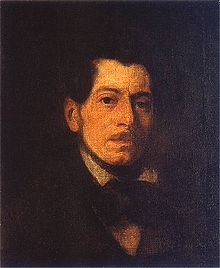Piotr Michałowski, painter, organizer of social and industrial activities

Born: July 2, 1800, Krakow, Austro-Hungarian partition of Poland, presently Poland
Died: June 9, 1855, Krzyztoporzyce, Austro-Hungarian partition of Poland, presently Poland
Opinion. His talent was long underestimated and discovered by Pablo Picasso in 1948 when he visited Poland and in Warsaw National Museum when he saw Michałowski paintings he shouted: Here, painter!
Early days. His father, a nobleman, was a Senator in Krakow's Senate.Michalowski studied natural sciences, economy and humanities at the Jagielonian University in Krakow (1815-1820) and at the University of Gottingen (1821-1823).
Career. During 1823-1830 he organized metallurgy for the Government Commission for Revenues and Treasury. During this time he often visited his sister Michalina and her husband Count Ostrowski who lived in Tomaszow Mazowiecki. He painted there forges, blacksmiths at work, and Tomaszow's burghers. He also painted portraits of Ostrowski and his family but also of military leaders like Napoleon, Stefan Czarniecki, Karol Kniaziewicz. His battle scenes- like the ones from Napoleon's wars- are full of dynamism. In 1831 he married Ostrowski's daughter from his first marriage, Julia. He participated in the November uprising by supervising the production of guns and munitions. After the uprising’s defeat he left for Paris where he got acquainted with the work of the best Spanish, Flemish and Dutch painters. In 1837 he returned to Poland and presided over the Krakow's Administrative council during 1848-1853. In 1848 he fuded St.Joseph's Home for Orphaned Boys. In free time he painted superb portraits (Napoleon horse riding, Somosierra battle) and images of horses. He is recognized to be the principal representative of romanticism in Polish painting. Michalowski was buried at Krakow's Rakowicki Cemetery.
Source:
This article uses mostly material from the Wikipedia article "Piotr Michalowski." Text is available under the Creative Commons Attribution-ShareAlike License; additional terms may apply. :
Wikipedia (in Polish)
Other sources:
Collection of photos of his numerous paintings
as above
Return to home page:
Prominent Poles
